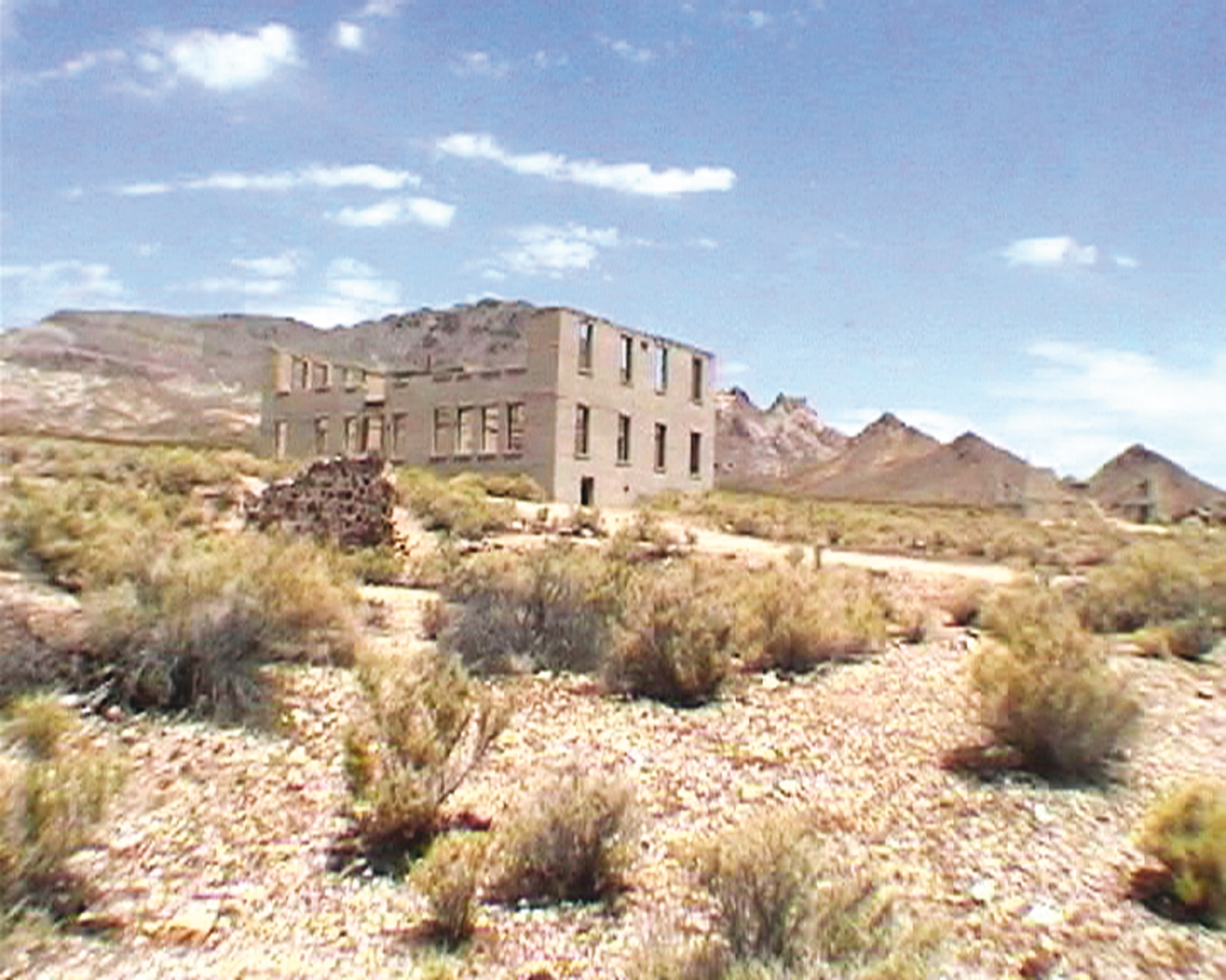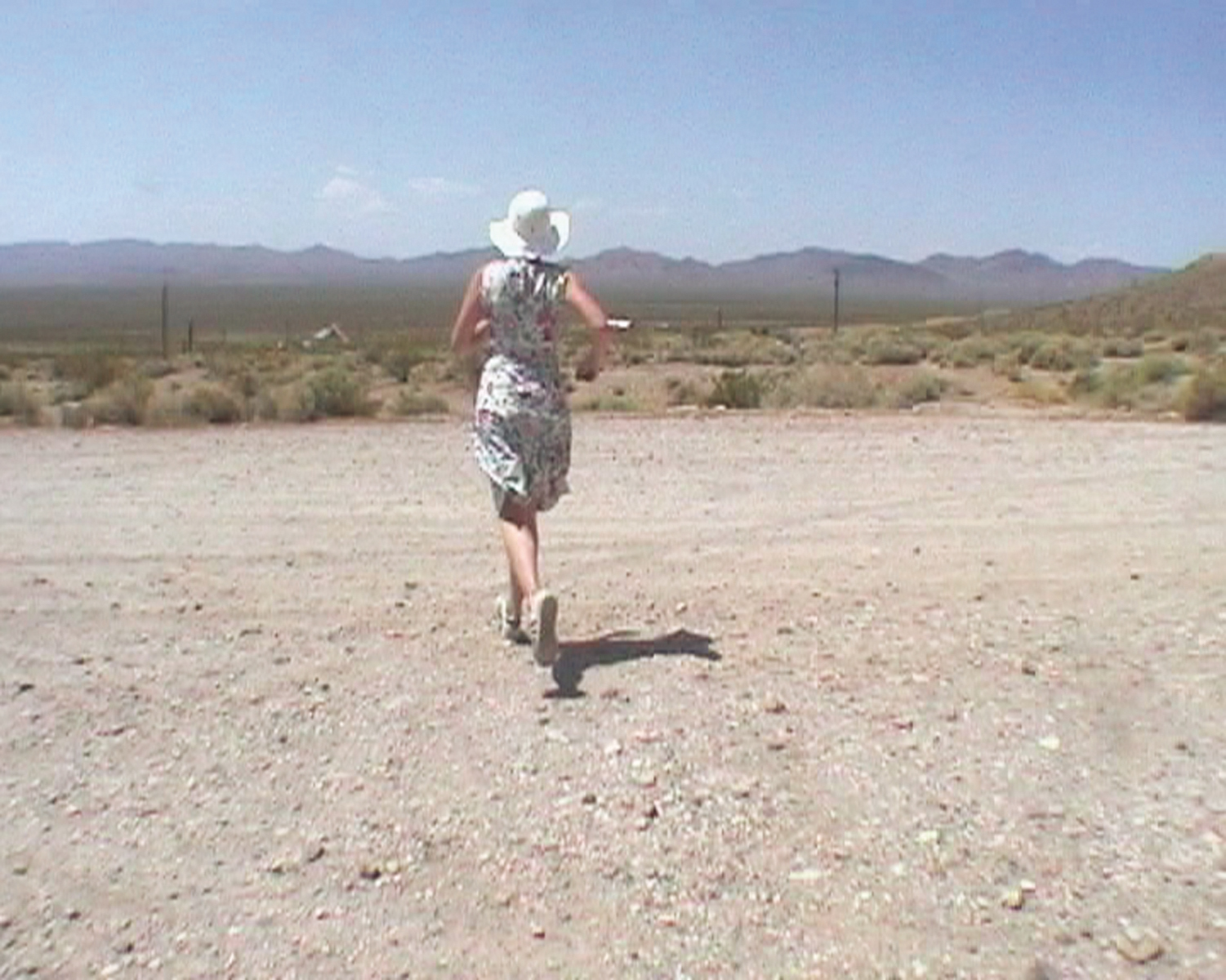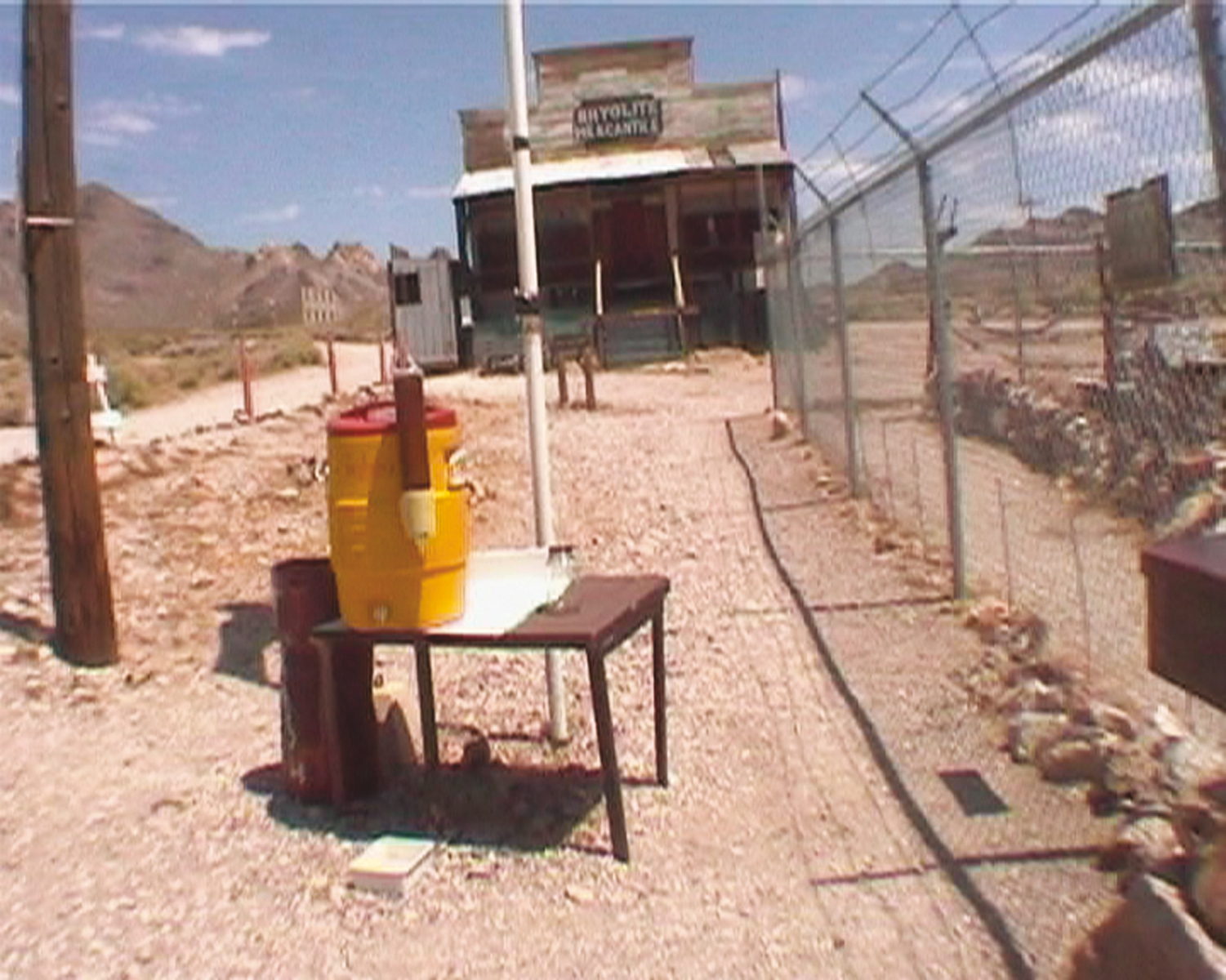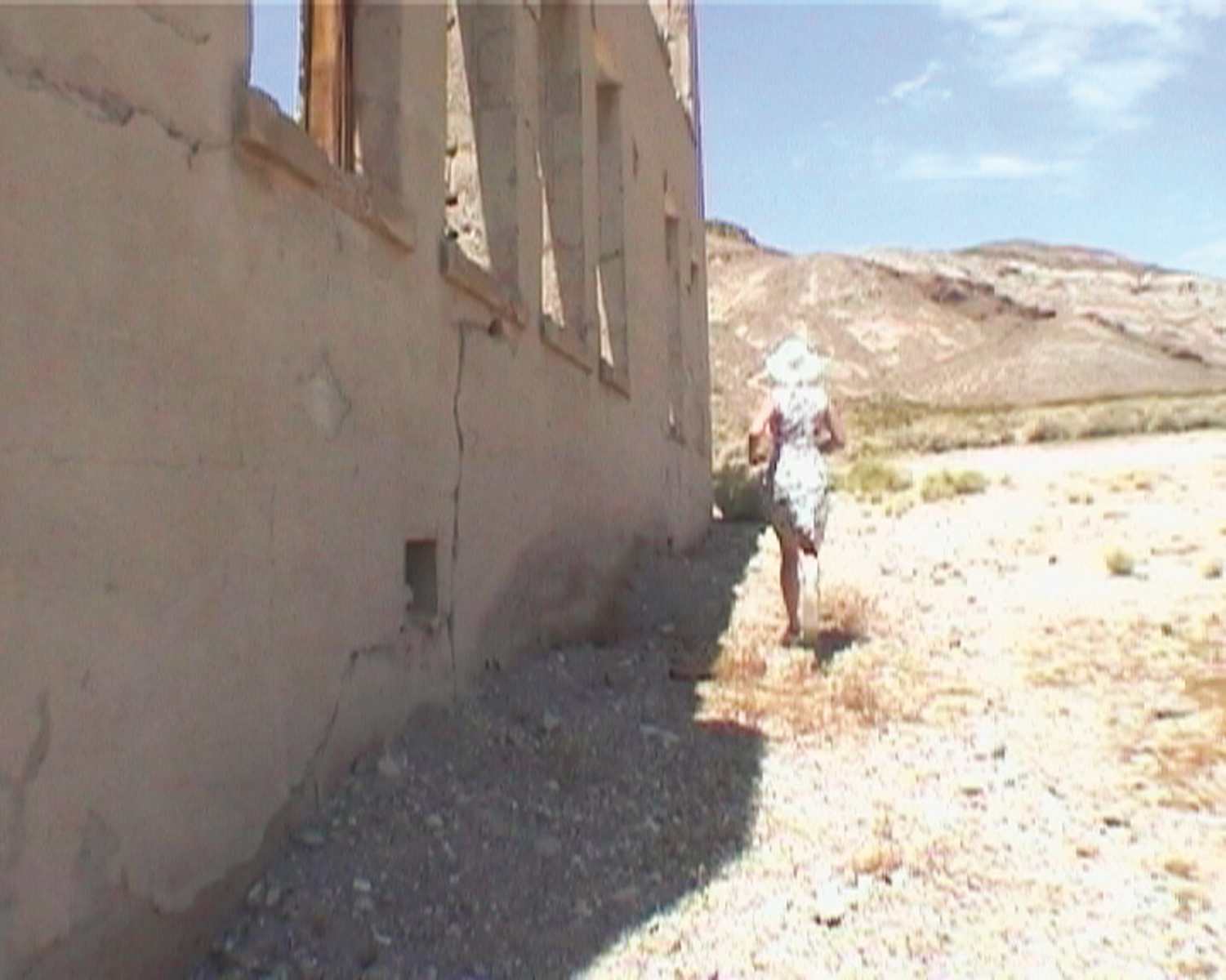PARANOIA (DEATH VALLEY)
video
video
5 min.
distribution sixpack
2005
Empty space, especially in the camera´s apparative coordinates, is never really empty. It can become visibly and conceivably empty only when the spatial conditions convey a fundamental absence over time, one which infects the entire space. And something else – the camera – is present to have seen everything in even the "emptiest" of spaces. You´re never alone. Miriam Bajtala´s Paranoia (Death Valley) stages a peculiar chase involving the camera and its subject at an abandoned hamlet in California´s Death Valley: A woman´s figure runs away from the camera, then disappears suddenly, after which the camera´s subject – a thoroughly lovable "something" waddling along in fast motion – follows the woman through the picturesque ghost town. The figure reappears, runs away again, the camera follows her, and so on. In this way the space is turned into a narrative location, a dubious setting filled with phantoms from the past: The woman must have been here at some point. The entire process repeats, opening up into a looped eternity, but Bajtala ends her filmic adventure game before the pursuer can catch its prey. A tragic aspect: The figure´s place there and the camera´s here – our place – can never meet. Therefore our relationship with the setting is paranoid and divided: The primary identification through the camera and the secondary identification with the woman in the space make us realize in an eerie way that we have never really been with ourselves, but always off to the side. And that´s the original meaning of the word para-noia: beside-mind. (Michael Palm)
distribution sixpack
2005
Empty space, especially in the camera´s apparative coordinates, is never really empty. It can become visibly and conceivably empty only when the spatial conditions convey a fundamental absence over time, one which infects the entire space. And something else – the camera – is present to have seen everything in even the "emptiest" of spaces. You´re never alone. Miriam Bajtala´s Paranoia (Death Valley) stages a peculiar chase involving the camera and its subject at an abandoned hamlet in California´s Death Valley: A woman´s figure runs away from the camera, then disappears suddenly, after which the camera´s subject – a thoroughly lovable "something" waddling along in fast motion – follows the woman through the picturesque ghost town. The figure reappears, runs away again, the camera follows her, and so on. In this way the space is turned into a narrative location, a dubious setting filled with phantoms from the past: The woman must have been here at some point. The entire process repeats, opening up into a looped eternity, but Bajtala ends her filmic adventure game before the pursuer can catch its prey. A tragic aspect: The figure´s place there and the camera´s here – our place – can never meet. Therefore our relationship with the setting is paranoid and divided: The primary identification through the camera and the secondary identification with the woman in the space make us realize in an eerie way that we have never really been with ourselves, but always off to the side. And that´s the original meaning of the word para-noia: beside-mind. (Michael Palm)





